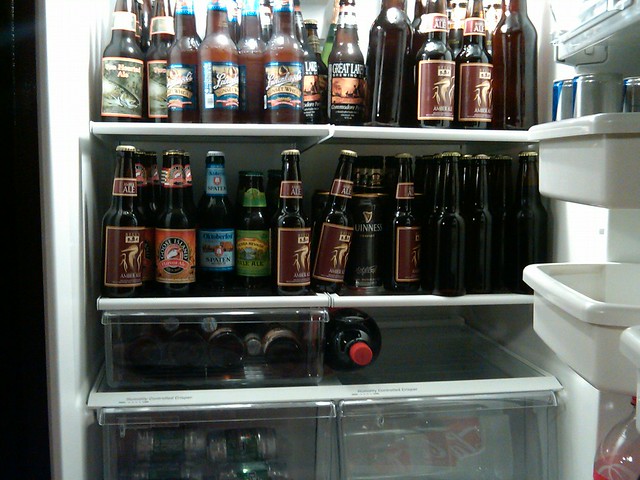Ringmaster
Well-Known Member
i'm reading John Palmer right now and it's my first time through but i'm a little confused about something.
He says "bad things" can happen after 3 weeks fermentation. But that some beer's like doppelbock need over 6 months to a year of conditioning to reach their "peak".
So i'm kind of confused.. Do i have to worry about fermenting longer then 3 weeks? something about yeast breaking down and creating off flavors? Do you just condition in bottles so there's less yeast and less to worry about?
And how long do you leave beer in the fridge? does anything chemistry wise still go on with the beer after i put it in the fridge? i had instructions that said to leave them in for 2 days.. haven't seen that mentioned anywhere. Would it be a good idea to leave them in for longer, or was this just to make them cold?
Just starting brewing, there's a lot of reading that goes into this
Thanks for the help guys
He says "bad things" can happen after 3 weeks fermentation. But that some beer's like doppelbock need over 6 months to a year of conditioning to reach their "peak".
So i'm kind of confused.. Do i have to worry about fermenting longer then 3 weeks? something about yeast breaking down and creating off flavors? Do you just condition in bottles so there's less yeast and less to worry about?
And how long do you leave beer in the fridge? does anything chemistry wise still go on with the beer after i put it in the fridge? i had instructions that said to leave them in for 2 days.. haven't seen that mentioned anywhere. Would it be a good idea to leave them in for longer, or was this just to make them cold?
Just starting brewing, there's a lot of reading that goes into this

Thanks for the help guys




 Yeah, sometimes I think too much and sometimes not enough.
Yeah, sometimes I think too much and sometimes not enough.